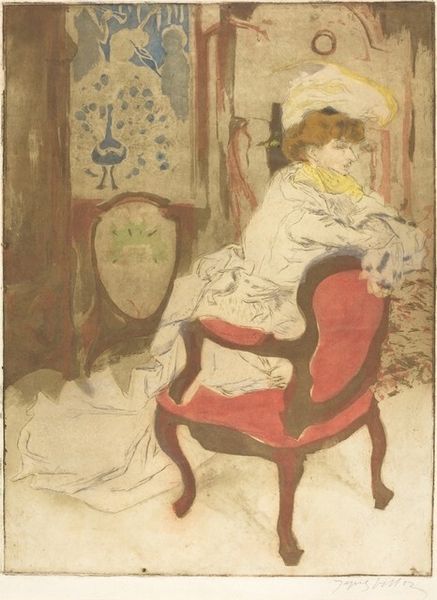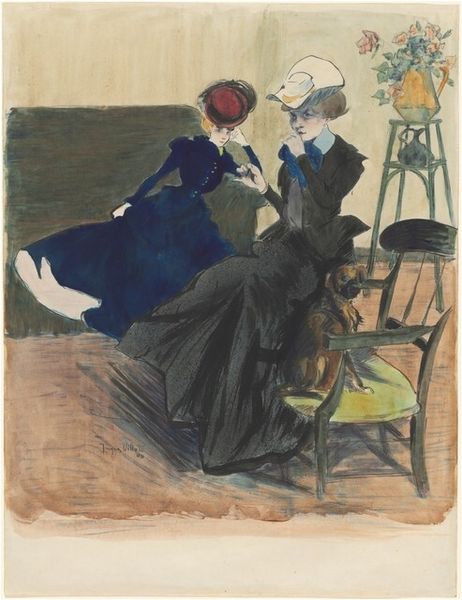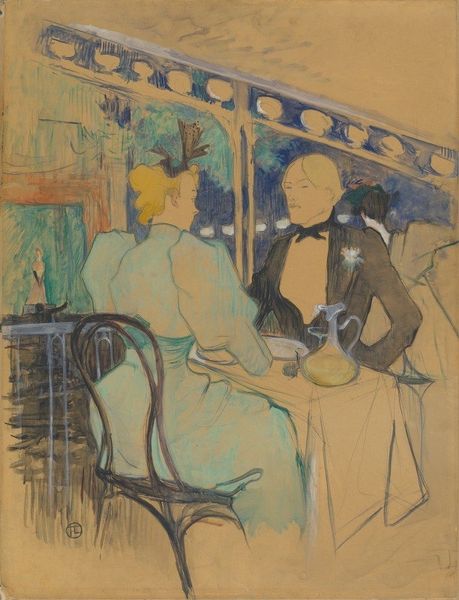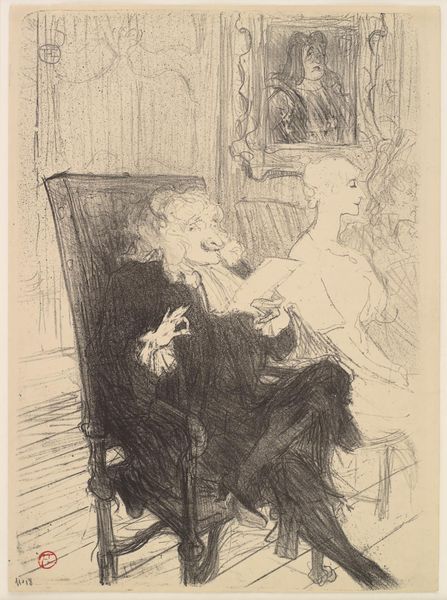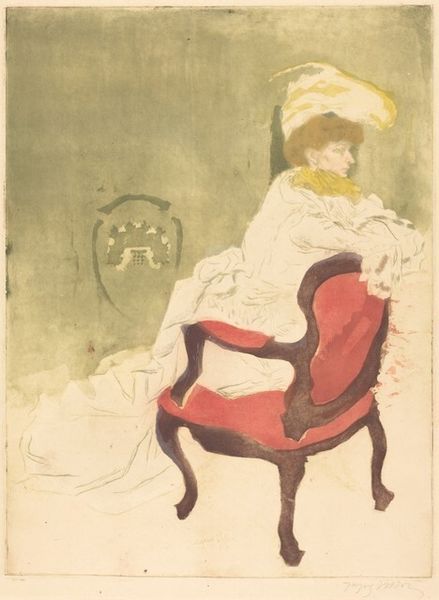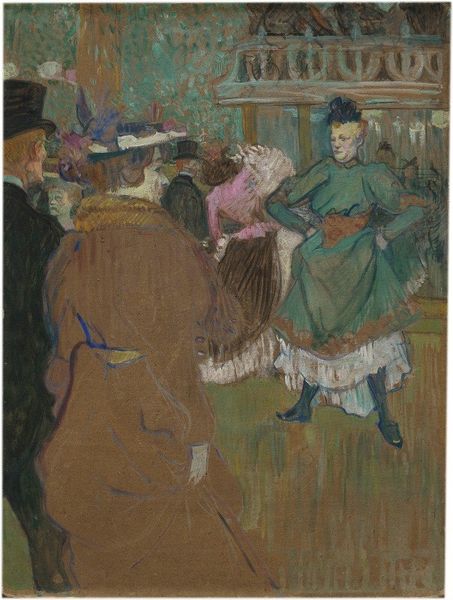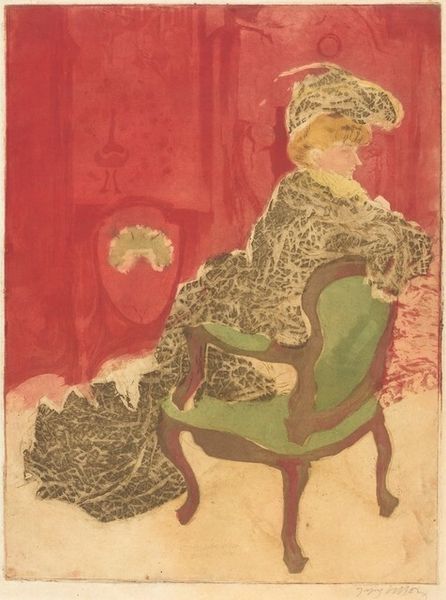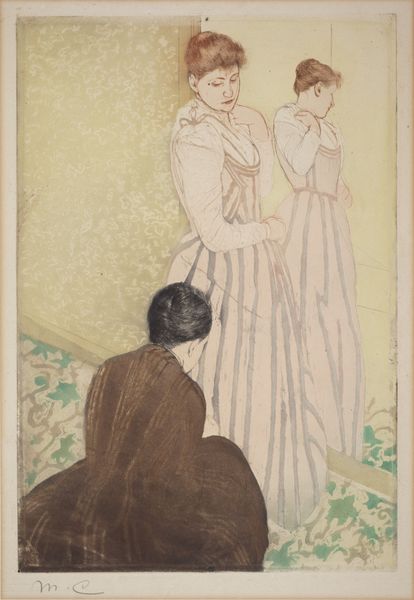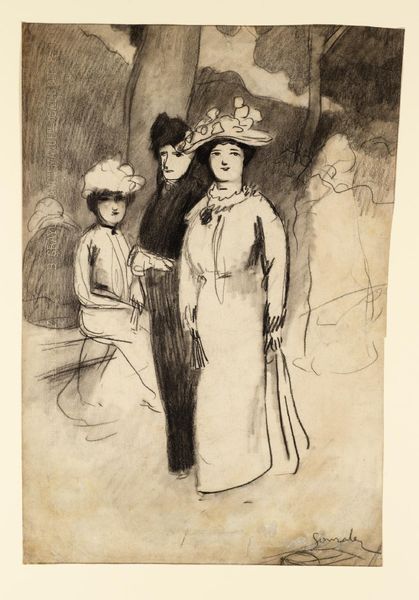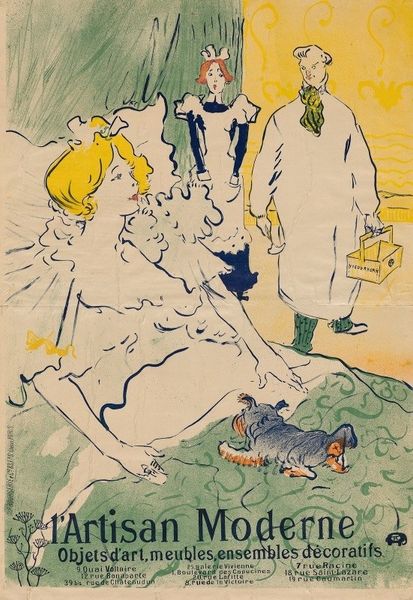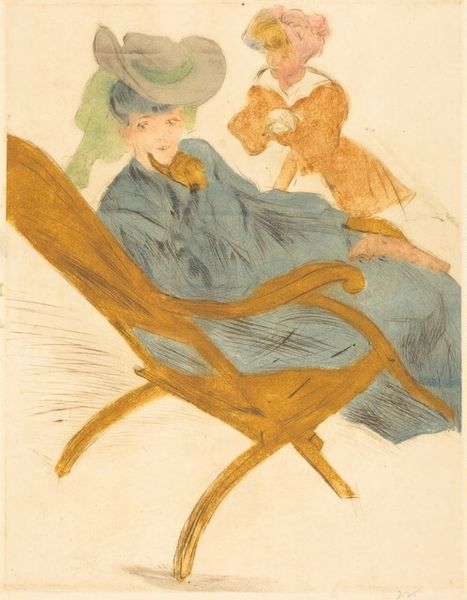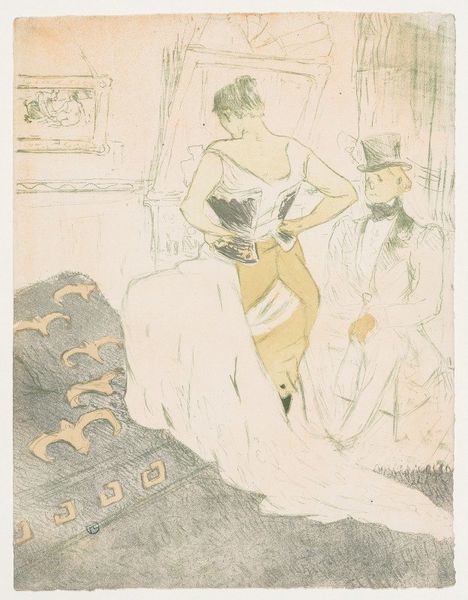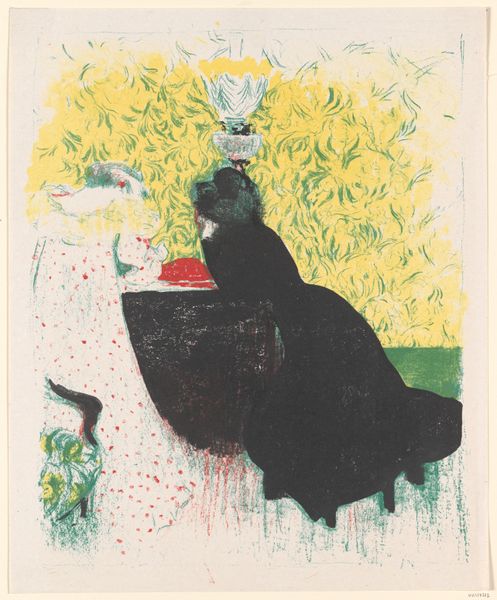
Dimensions: plate: 49.8 x 41.8 cm (19 5/8 x 16 7/16 in.) sheet: 66.9 x 51 cm (26 5/16 x 20 1/16 in.)
Copyright: National Gallery of Art: CC0 1.0
Curator: So, here we have Jacques Villon's "An Entertainment (Comédie de société)" from 1903, a colored etching and aquatint print. What’s your immediate reaction? Editor: I see polite boredom, bottled-up energy. The palette, muted and faded, lends this gathering a melancholic feel. Makes me wonder, what were they REALLY thinking? Curator: Right. It's interesting to consider the labor and social dynamics inherent in creating a colored etching like this back then. Each layer of color required a separate plate meticulously etched by hand. The materials involved were costly, reflecting a certain level of social standing for both the artist and his subjects. Editor: It does bring to mind a hushed stage production, like watching figures on pause from a play. But for me it evokes an odd intimacy as though i've stumbled into a world of half formed connections. It's got a delicious tension in the tableau between the women. Curator: These "comedies of society," as Villon termed them, offer commentary on bourgeois life, its superficiality, and the performance of social rituals. This particular example, being a print, would have been circulated widely, reaching a broader audience and perhaps sparking conversation, maybe even challenging some viewers’ notions of propriety and class. Editor: I love how the sketchy lines both capture and hint at detail, like lost conversations just beyond earshot, creating an elusive, dream-like atmosphere. Makes one consider the performativity of simply *being* in these kinds of societal environments. Is that not itself a process, too, a work of emotional labor and costuming of the soul, to fit into these gilded cage moments? Curator: Absolutely! And to add to that thought, consider the material consumption at play. The clothing, the hats, the furniture--all of which represent a complex web of production, trade, and social display. Editor: Exactly. It makes you ponder what this 'entertainment' actually IS? Is it a show *for* these women? A show *put on by* these women for an audience of the elite class and others outside that purview? Curator: These works provide us not just with the end product of an artistic vision, but insights into the economics and production of visual culture in early 20th century France. Editor: So it appears even after all these years later, they continue to ask more questions about that world, about OUR world today as well.
Comments
No comments
Be the first to comment and join the conversation on the ultimate creative platform.
